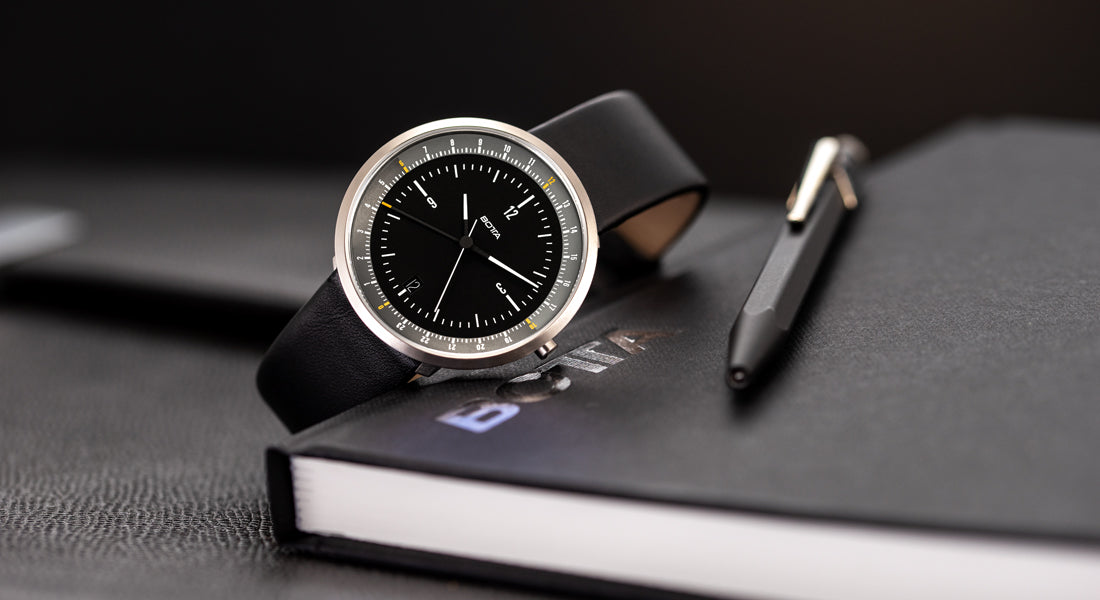On a gray day in June 1876, dark clouds are gathering over a railroad station in Ireland. A deep rumble roars from a distance before a sudden heavy rain sets in. On this day of all days, the Canadian engineer and railroad director Sandford Fleming is waiting for the train at the countryside station. But his hopes and fears are in vain, because the train will not arrive. No loud roaring of a locomotive can be heard, no white steam can be seen far and wide. Everything seems to stand still. When Fleming looks at his watch, he notices that it shows a different time than the station clock. He realizes that there is no uniform time in the world, each clockwork seems to follow its own rules. Fleming has had enough of pointless waiting. It is finally time for the world to agree on uniform times!
Sooner or later, Sandford Fleming had to encounter this problem at a train station. Because in his time, the clocks were aligned from place to place according to the respective highest altitude of the sun. Before people were able to commute or travel quickly and comfortably between two places thanks to railroads and steam power, nobody noticed much of this. But the different local times led to more and more inconsistencies during the industrialization era. It was obvious that a common solution had to be found.
With Greenwich Mean Time to the uniform time
Fleming's efforts soon met with understanding. Together with like-minded people, he advocated the worldwide establishment of time zones. A simple calculation served as the basis for this: the 360 degrees of the globe divided by 24 (the number of hours in a day) gives the value 15. Consequently, the same time should apply in zones of 15 degrees of longitude each. Following on from this system, 25 nations at the Meridian Conference in Washington on October 13, 1884, laid down the binding world time order called Greenwich Mean Time (GMT in short). The name goes back to the mean local time of the Royal Greenwich Observatory, which was declared the international zero meridian. In 1893 the uniform time determination was introduced in Germany. The time zones follow the meridian lines, as well as political state borders and natural boundaries such as river courses or mountain ranges. Since 1919, GMT has also been known as Universal Time (UT).
When the different time zones had established themselves, the first GMT automatic watches were produced that visualized GMT time in addition to local time. For the display of the second time zone, a rigid second hour hand was attached, which moved at a fixed distance to local time. However, when a time zone was changed or, at the latest, daylight savings time was introduced, it became apparent that the watches were largely unusable due to the rigid double-hand system. In subsequent, more modern models, a special crown allowed the second hour hand to move freely around the dial.
Nowadays, dual-zone watches are more relevant than ever. In the business world, they are essential for frequent flyers who travel on business to several continents or time zones. The wearer can read the time of the current location and at the same time knows what time it is back home. No other watch manages to connect people in love, relatives and friends better than the MONDO GMT by BOTTA. This model adds a second time zone to the classic three-hand watch. The second time zone is represented by a single additional hand on a 24-hour scale. A purist design and perfectly shaped aesthetic elements characterize the MONDO GMT based on BOTTA´s unique one-hand principle.
More current than ever: GMT watches
In extensive countries like Australia, Russia or America, there are several different time zones. The MONDO GMT by BOTTA design is the perfect watch for business travelers who want to keep a connection to home-country, or the ideal gift for couples and friends who are separated by thousands of kilometers every day.
Unfortunately, Sandford Fleming did not live to see the phenomenon of modern GMT watches. In all probability he would wear the MONDO GMT by BOTTA design with great joy and satisfaction and would not have had to wait eagerly for the train on that rainy day in 1876.










